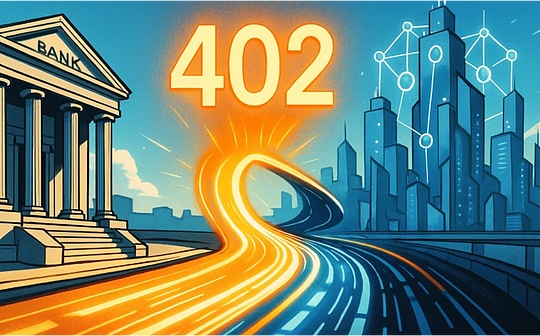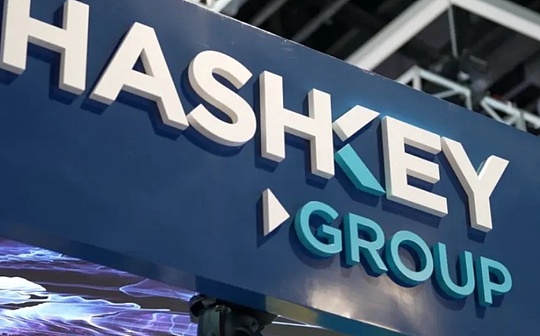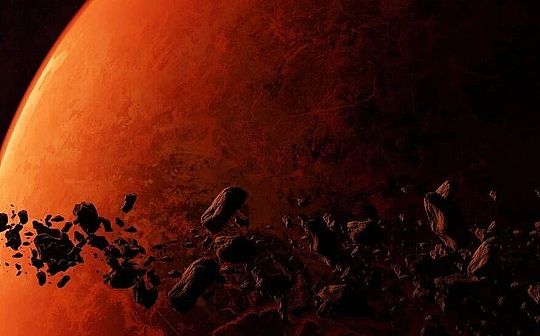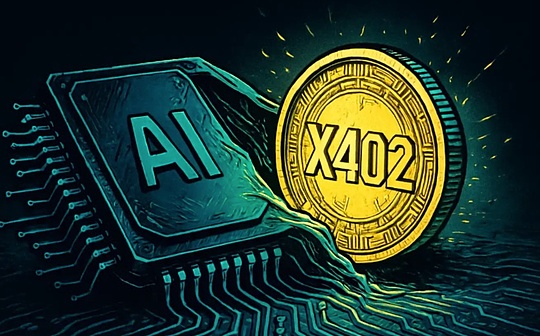
Source: Chain Tea House
1. Project introduction
Arweave is a decentralized data storage solution that provides permanent and unsusable data storage services through its block weaving technology and native cryptocurrency AR tokens.Users can pay a one -time fee to permanently store data and get rewards by contributing unused storage space.

As a tool to help anyone store data permanently, Arweave works by distributed information in a computer network called node or miner.This method is different from the traditional Internet, because today’s Internet is controlled by a few companies’ servers, these servers may be paralyzed or quietly changed at any time.
Arweave provides services for a parallel Internet (referred to as Permaweb) through a extensive node network.All these nodes make money by providing existing data for a long time and stored new data according to customer requirements.Arweave uses its native cryptocurrency AR to run services. When people spend tokens to store data, they will pay AR to miners and store some AR in a donation fund to ensure unlimited permanent storage.
2. Working principle
Arweave runs through an innovative data structure called a block weaving, which links each block to the previous block and a historical block (recall block).Miners must provide proof of access before adding a new block to ensure the integrity and uncomfortable of all data.Users only need to pay a one -time fee to permanently store data. Some of the costs are used for initial storage costs, and the other part enters the donation fund for future storage costs.The simplicity proof of random visits (SPORA) further improves the efficiency and security of the network.Bundling has improved the efficiency and network performance of data upload by merging multiple transactions into a large transaction.Through these mechanisms, Arweave realized a decentralized, permanent data storage network.

3. Core mechanism
3.1Block weaving

Blockweave is Arweave’s core data structure, which improves the design of traditional blockchain and realizes efficient, reliable and permanent data storage.The following is a detailed analysis of block weaving:
3.1.1Basic structure
The main difference between block weaving and traditional blockchain is its link structure.Each block of traditional blockchain is only connected to the previous block, while each block in the block woven not only links to the previous block (parent block), but also links to a historical block (recalls the block of blocks (recalls the blockTo.This dual link structure increases the redundancy and security of data storage.

-
Father’s block: Like the traditional blockchain, each block in the block woven links to its direct block to form a basic chain structure.
-
Memory block: Each block is also linked to a randomly selected historical block. This link is random, the purpose is to increase the redundant and access of data.
3.1.2Data verification process
In block weaving, miners need to verify a randomly selected historical block before generating new blocks.This verification mechanism is called the Proof of Access (POA).POA ensures that all stored data blocks can be accessed and verified. In order to increase the opportunity to get mining rewards, the miners will store more historical data blocks, thereby increasing the redundancy of the data.

-
Random choice: Through random selection of historical blocks for verification, the miners cannot foresee specific data blocks that need to be verified, so that a large amount of historical data must be stored.
-
Data integrity: This mechanism ensures the integrity and non -tampering of data, and increases the security of data.
3.1.3Data storage redundant
The dual link structure of the block woven greatly increases the redundancy of the data.Because each block is connected to multiple blocks, even if some nodes fail or lose data, other nodes can still recover data through redundant links.This design improves the durability and ability to resist failure.
-
Multi -link: Through the dual link of the parent block and the memory block, the storage of data in the network is highly redundant.
-
Data recovery: In the case of failure or data loss, other nodes can use redundant links to restore data to ensure high availability of data.
3.1.4Construction and mining of block weaving
Miners get rewards by generating new blocks in the Arweave network.In order to generate new blocks, miners must be able to access and verify the specified historical blocks.This mechanism inspires miners to store more historical data and improves the overall data storage and security of the network.
-
Mining process: Miners need to verify the historical blocks of random selection, generate new blocks and get AR token awards.
-
Incentive mechanism: This mechanism prompts miners to store more data, increasing the redundancy of data and network security.
3.1.5Uncomvitatory and security of data
Because each block in the block woven connects multiple blocks, and is verified by the POA mechanism, it ensures that the data cannot be changed and deleted once it is stored.This immorality provides high security to prevent data from being maliciously tampered with or deleted.
-
Unsophisticated: Once the data is stored in block weaving, it cannot be changed or deleted to ensure the integrity of the data.
-
Security: Multiple links and random verification mechanisms improve the security of data and prevent malicious tampering.
3.2Simple proof of random visit (SPORA)

The simplicity proof of random access is an important consensus mechanism for Arweave to improve its network efficiency and security.Through SPORA, Arweave can improve the efficiency of data storage and access on the premise of ensuring data integrity and security.The following are several key aspects of SPORA’s detailed analysis:
3.2.1Basic principle
SPORA (Succinct Proofs of Random Access) is a PROOF of Access (POA) mechanism.Its core idea is to verify new data blocks by randomly selecting historical data blocks to ensure the integrity and security of the data.This randomness reduces the possibility of mineral cheating, while increasing the security of the network and the redundant of data.
3.2.2Data verification process

In Spo, the miners need to verify a randomly selected historical data block before adding a new block.This random selection process makes the miners unable to foresee the specific data blocks that need to be verified, so that they cannot selectively store data.In this way, SPORA ensures that miners must store a large amount of historical data blocks to increase their mining opportunities, thereby increasing the redundancy of the data and the overall security of the network.
3.2.3Improving the incentives of miners
SPORA enhanced the miners’ incentive mechanism.Because miners must store more historical data blocks to increase the probability of mining success, this prompts them to invest more resources to store and maintain data.Miners not only obtained mining rewards through verification and storage data, but also increased their competitiveness in the network by increasing data storage volume.
3.2.4Improvement of energy efficiency
Compared with the traditional workload (POW) mechanism, SPORA is more energy -saving.POW requires miners to verify transactions through complex calculations, which has led to a large amount of energy consumption.Through random access and verification of historical data blocks, SPORA greatly reduces the consumption of computing resources, thereby improving the energy efficiency of the network.This efficient verification process not only reduces energy costs, but also reduces the impact on the environment.
3.2.5Safety and anti -aggressiveness
Through its randomness and data redundancy, SPORA enhances the security and anti -aggressiveness of the network.Because miners cannot predict data blocks that need to be verified, it makes it difficult for malicious attackers to perform targeted attacks.In addition, a large number of historical data blocks stored by miners also increase the amount of data that attackers need to damage, thereby improving the overall security of the network.
3.3Bundling

Arweave’s bundling technology is one of its key innovations that improve data upload efficiency and network scalability.Through this technology, Arweave can effectively process large -scale data uploads and improve user experience and network performance.The following is a detailed analysis of binding technology:
3.3.1Basic principle
The core idea of bundling technology is to merge multiple small transactions into a large transaction, and then upload this large transaction to block weaving.This method reduces the frequent upload operation of a single transaction, thereby reducing network congestion and improving the efficiency of data transmission.
3.3.2Improvement of data upload
In the absence of binding technology, each upload transaction needs to be handled and recorded separately, which not only increases the burden on the blockchain, but also leads to low efficiency during the data upload process.By bundling technology, multiple small transactions were packed into a large transaction upload, reducing the number of transactions on the chain, thereby greatly improving the efficiency of data upload.
3.3.3Network expansion
Binding technology has significantly improved the scalability of Arweave network.In large -scale data upload scenarios, such as the intangible homogeneous tokens (NFT) projects and media document storage, bundling technology can effectively handle a large number of concurrency upload requests to avoid network congestion and performance bottlenecks.For example, Arweave successfully uploaded 47GB of data in a bundle operation, which is difficult to implement in the traditional chain data storage scheme.
3.3.4Transaction determination and developer experience
By bundling technology, developers and users can better know the result of data upload, because the success rate of uploading power of large transactions is higher than the success rate of multiple small transactions.This certainty improves the experience of developers, so that they can focus more on application development without having to worry about the complexity of underlying data storage.
3.3.5Cost
Binding technology not only improves the efficiency of data upload, but also brings significant cost benefits.In the traditional chain data storage model, each transaction requires payment fees, and the bundling technology reduces the number of transactions by merging transactions, thereby reducing the overall transaction cost.This is an important advantage for users who need to store a lot of data.
3.3.6Data integrity and security
Binding technology ensures the integrity and security of data.Although multiple transactions are merged into a large transaction, the data of each small transaction remains complete and cannot be tampered with.In this way, even during the uploading process, you can also ensure the security and integrity of data by re -packing and uploading.
3.4Wildfire mechanism

Wildfire is an incentive mechanism in the Arweave network, which aims to improve the overall user experience by optimizing data dissemination and improving network performance.The following is a detailed analysis of the Wildfire mechanism:
3.4.1Basic principle
The Wildfire mechanism encourages the node to respond quickly and meets the data request through a ranking system.The node ranks based on the speed and efficiency of the data spreading in the network. The higher the node, the more the nodes will get more requests and rewards.This mechanism ensures the rapid distribution of data in the network and improves the overall performance of the network.
3.4.2Data communication efficiency
The core of the Wildfire mechanism is to improve the efficiency of data communication.After receiving new data in the network, the node will spread it to other nodes as soon as possible.Nodes with fast transmission and rapid response will occupy an advantage in ranking, so as to get more request processing opportunities and corresponding rewards.
-
Quickly spread: After receiving the new data, the node quickly spreads it to other nodes to ensure the rapid flow of data in the network.
-
Efficiency priority: Through the ranking mechanism, the node is encouraged to optimize the efficiency of data communication and improve the overall performance of the network.
3.4.3Node ranking system
The Wildfire mechanism ranks the efficiency of data dissemination by ranking the performance of the node.The ranking system scores the node according to the speed and reliability of the node response data request.High scoring nodes enjoy higher priority in the network, get more opportunities and rewards for request processing.
-
Response speed: The speed of node response data request is an important indicator of ranking. The faster the speed, the higher the ranking.
-
Data reliability: The reliability of the node to provide data is also a key factor in ranking. The more stable the data provides, the higher the ranking.
3.4.4Incentive and reward mechanism
The Wildfire mechanism encourages nodes to improve the efficiency of data dissemination by rewarding high ranking nodes.The nodes quickly and reliably disseminate data to get higher rankings and more rewards.This reward mechanism ensures the active participation of nodes in the network and improves the overall performance and availability of the network.
-
Rank: Get more request treatment opportunities and corresponding rewards for high ranking nodes.
-
Economic inspiration: Nodes obtain economic returns by providing fast and reliable data communication services, and inspire nodes to continue to optimize performance.
3.4.5Network health and robustness
The Wildfire mechanism not only improves the efficiency of data communication, but also enhances the health and robustness of the network.Through the rapid response and dissemination data of incentive nodes, the Wildfire mechanism ensures the stability and efficient operation of the network under high load and high demand.
-
High load adaptation: In the case of high load, the Wildfire mechanism ensures that data can spread quickly and efficiently in the network.
-
Robust improvement: By optimizing the performance of nodes, the Wildfire mechanism enhances the overall robustness and reliability of the network.
4. AR tokens
AR tokens are native cryptocurrencies in the ARWEAVE network, playing multiple key roles, from motivated miners to paying data storage fees, to maintaining the economic balance of the entire ecosystem.

The following is a detailed analysis of AR tokens:
4.1Basic function of AR tokens
-
Payment data storage fee: When users store data on the Arweave network, they need to use AR tokens to pay for one -time storage costs.These costs guarantee the permanent storage of data.
-
Inspirational miner: Miners get AR tokens as rewards by storing and verifying data.This mechanism inspire miners to actively participate in data storage and maintenance to ensure the security and reliability of the network.
4.2One -time payment model
Arweave’s business model is different from traditional subscription services. Users only need to pay a one -time fee to permanently store data.Some of these costs are used to pay the initial storage cost, and the other part is used to enter the Endowment Fund for future storage costs.
-
Initial storage cost: The payment fee is immediately used to pay the initial storage and access to pay data.
-
Donation fund: About 86% of the costs enter the donation fund, which is used to motivate miners and ensure the durability of data for a long time.
4.3Endowment Fund (Endowment Fund)

The design of the donation fund is similar to the traditional economic donation structure, which aims to pay future storage costs through interest and value -added.The interest generated by the initial expenses paid by the user is used to pay for the long -term storage costs of the miners to ensure that the data can be permanently stored.
-
Fund operation: Donation funds accumulated funds and interests to ensure that the miners have obtained sustainable economic incentives in the next years.
-
Falling expected: As data storage costs are expected to continue to decline, the interest income of the donation fund is sufficient to cover long -term storage costs.
4.4Token supply
-
Initial supply: 66 million AR tokens.
-
Circulation supply: 55 million AR tokens
-
Gradually decrease: Similar to the halving mechanism of Bitcoin to ensure the scarcity and long -term value of token supply.But unlike, AR tokens use a gradual reduction mechanism, which means that the amount of tokens will gradually decrease within each small cycle.
4.5AR token distribution

-
Seed sales: 9%.
-
Private sale: 13.42%.
-
Public sale: (ICO): 3.75%.
-
Strategic partners: 5.42%.
-
Consultant: 2.42%.
-
Team: 10.83%.
-
Technology startup: 0.5%.
-
Use incentives: 15.92%.
-
Project: 22.07%.
-
Mining reward: 16.67%.
4.6Token economic incentive
AR tokens inspire network participants in various ways:
-
Miner reward: Miners obtain AR token rewards through storage and verification data, increasing their enthusiasm for participation.
-
User payment: Users pay AR tokens to store data to ensure that their data can be kept permanently.
-
Income sharing: Arweave introduced the benefit sharing tokens (PST). Developers obtain tiny dividends by constructing and operating applications to promote the development and innovation of ecosystems.
4.7Token market performance
AR tokens’ performance in the market is affected by various factors, including increased storage demand, the development of ecosystems, and the market’s recognition of decentralized storage solutions.The value of AR tokens increases with the growth of the network and the increase of user demand.
-
Market demand: With the growth of the ARWEAVE network and the increase in user demand, the market value of AR tokens has also increased accordingly.
-
Development of ecosystems: More developers and projects have joined the Arweave ecosystem to promote the demand and value growth of AR tokens.

At present, the market performance of AR tokens is as follows:
-
price: $ 46.83, rising 16.10%in the past 7 days.
-
Market value: $ 3,065,146,793, recently decreased by 2.26%.
-
24 -hour transaction volume: $ 172,123,630, recently increased by 104.49%.
-
Transaction volume/market value ratio: 5.38%.
-
Circulation supply: 65,454,185 AR, accounting for 99.17%of the total supply.
-
Fully dilute market value: $ 3,090,706,704.
5. Team/cooperation/financing status
5.1team

Arweave is a decentralized data storage protocol, and its core team consists of experienced technical experts and industry leaders.The founder and CEO SAM Williams graduated from the University of Nottingham with a deep blockchain technical background.The chief operating officer (COO) Sebastian Campos Groth graduated from Georgen University and worked at Techstars to be responsible for the daily operation of the project.Giti Said, the director of legal affairs, graduated from the University of Vienna and is responsible for dealing with legal affairs.The team also includes many technical and business experts, such as Richard Pardoe and Movement Labs, co -founder of LIquity, and Andy Bell, who is the engineering director of the Movement Labs. They jointly promote the development and innovation of Arweave.
5.2cooperate

1. kyve
-
Brief introduction: Kyve is a blockchain storage middleware based on Arweave, which provides standardized verification and archive framework.
-
Highlight of cooperationThe
Kyve’s main network was launched and uploaded more than 2,000 TB data.
Kyve has established a strategic partnership with 19 projects and plans to host community growth activities in 2024.
2.IRYS (formerly known as Bundlr)
-
Brief introduction: IRYS is an extended solution of Arweave, which increases the permanent data throughout the bundle transaction.
-
Highlight of cooperationThe
In September 2023, IRYS completed the processing of 1 billion transactions.
In October 2023, IRYS and Solana Mobile worked with DAPP Store applications.
3..Ardrive
-
Brief introduction: Ardrive is a decentralized cloud storage application, similar to the web3 Dropbox or Google Drive.
-
Highlight of cooperationThe
In February 2023, Ardrive was completely decentralized and stored on Arweave.
In May 2023, ARDrive 2.0 was launched, adding a new dark mode, wallet generation, and large file upload function.
5.3Financing situation

Since its establishment, Arweave has successfully raised $ 37.3 million in funds through multiple rounds of financing. The main investors include Andressen Horowitz (A16Z), Union Square Ventures, Multicoin Capital, Coinbase Ventures and other well -known institutions.Here are some major financing events:
1. 1.Seed wheel financing
-
time: 2017
-
Amount: $ 5 million
-
Main investor: Andreessen Horowitz (A16Z)
2.Private equity financing
-
time: 2019
-
Amount: $ 8.3 million
-
Main investor: Multicoin Capital, Union Square Ventures, A16Z, Coinbase Ventures, Arrington XRP Capital
3..Public offerings (ICO)
-
time: 2018
-
Amount: $ 15.7 million
-
illustrate: Public fundraising through the first token issuance (ICO) attracted a large number of early investors.
4. 4..Follow -up financing
-
time: 2020
-
Amount: $ 8.3 million
-
Main investor: Andreessen Horowitz (A16Z), Union Square Ventures, Coinbase Ventures
5.Latest financing
-
time: 2023
-
Amount: $ 8.3 million
-
Main investor: A16Z, Coinbase Ventures, Multicoin Capital
6. Project evaluation
6.1Track analysis
Arweave is a decentralized data storage track. It realizes the function of permanent storage data through its innovative block weaving technology.The core goal of the project is to provide an efficient, secure and scalable data storage solution, so that the data can be permanently preserved and cannot be tampered with.
Here are some decentralized data storage projects similar to Arweave:
1. 1.Filecoin
-
Brief introduction: Filecoin is a decentralized storage network that uses IPFS (interstellar file system) technology to drive storage nodes through economic incentive mechanisms.
-
Core technology: Proof of Replication and Proof of Spacetime.
-
Characteristic: Users pay storage fees on demand to support large -scale data storage and retrieval.
2.Siacoin
-
Brief introduction: Siacoin is a decentralized storage platform that stores safe and low -cost data storage through blockchain technology.
-
Core technology: Smart contract and storage certificate.
-
Characteristic: Users pay SIACOIN tokens to rent storage space to provide low -cost distributed storage solutions.
3..Storj
-
Brief introduction: STORJ is a decentralized cloud storage platform based on blockchain. Users can store data through distributed networks.
-
Core technology: Sabble technology and distributed hash table (DHT).
-
Characteristic: Data are stored on nodes around the world after the piece is encrypted to ensure the security and privacy of the data.
6.2Project advantage
-
Permanent storage: The user only needs to pay the disposable fee to store the data permanently on Permaweb without a monthly subscription fee.
-
Decentralization: Storage data through decentralized ways reduce the risk of dependent dependent servers.
-
Strong support: Arweave received the support of well -known investors including A16Z, Coinbase Ventures and Union Square Ventures.
-
Widely used: Metaplex of the NFT project of OpenSea and Solana is used as the default metadata storage platform to ensure the long -term effectiveness of NFT data.
-
One -time payment: Although Arweave’s one -time payment model can ensure permanent storage, the initial cost may be higher than the demand payment model.This may cause capital pressure for some users, especially small companies or individual users.
-
Cost transparency: The cost structure of one -time payment may be transparent than the need for payment models. Users need to have a comprehensive understanding of its cost structure before deciding to use Arweave.
-
The attractiveness of users and developers: Although Arweave’s technical advantage is obvious, its user and developer ecosystems are still developing, and it may be insufficient compared to some mature decentralized storage projects.
-
Market awareness: Arweave’s market awareness may not be high enough than competitors such as Filecoin, and more marketing and community construction requires its popularity and user base.
-
Development complexity: Arweave’s block weaving and other technologies may have certain complexity for developers. Developers need to invest more learning costs to understand and apply these technologies.
-
Technical bottleneck: Although Arweave provides efficient storage solutions, in the face of large -scale data storage and processing, technical bottlenecks may still be encountered, and continuous technological improvement and optimization are needed.
6.3Disadvantage
1. 1.High initial cost
2.Insufficient network effect
3..Technology and development challenges
7. Conclusion
As an innovator in the field of decentralized data storage, Arweave realizes the permanent storage and efficient management of data through its unique blockweave technology and strong economic incentive mechanism.The business model of one -time payment and permanent storage not only solves the problem of data loss and high cost in traditional storage systems, but also provides users with reliable and long -term data storage solutions.Although Arweave still faces some challenges in technology and marketing, its expanded ecosystem and diversified partnership have laid a solid foundation for it.With the continuous growth of blockchain technology and decentralized storage demand, Arweave is expected to become leaders in this field in the future to provide global users with more secure, transparent and efficient data storage services.Through continuous technological innovation and market expansion, Arweave is moving towards the goal of becoming the world’s leading decentralized storage solution provider.








